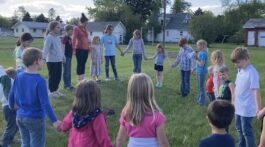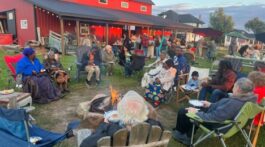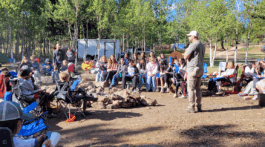“What is happening? The world is coming to an end!” exclaimed one of my friends upon hearing that the church was closing its doors until further notice. I responded, “Well, we have been preaching the end of the world since our inception as a church. That reality is coming down on us now!”
I never imagined that in my lifetime I would see “don’t shake hands” as important information in a church setting. As a pastor, I never thought I would—with a clear conscience—urge members to stay at home. But this is the new reality.
These last few weeks have seen our churches wrestle with the CDC guidelines regarding the COVID-19 situation. The pandemic has spread to all 50 states and approximately 173 countries and territories throughout the world. It is impacting businesses and churches, community events, and locking down whole states.
In the state of Minnesota, more than one third of Minnesota’s 87 counties have been affected. The total confirmed cases in Minnesota grew to 287 as of March 25. Health officials predict the numbers will go up.1
On March 13, when the Minnesota Department of Health announced a series of community-level strategies to help combat the spread of coronavirus, the Minnesota Conference immediately communicated with our churches to prayerfully consider what to do in response to this public health crisis. The conference administration prayed that the right decisions in our congregations would be made for the safety of the members and the community.
The North American Division suggesting the following as a buffer of protection to help slow the spread of COVID-19 in our churches and communities. This information was shared in our bulletins in early March:
- Careful washing of your hands with soap and water; and using sanitizer with at least 60 percent alcohol when washing hands is not possible.
- Covering of your mouth and nose while coughing and sneezing. If you don’t have tissue paper available, then utilize your arm or sleeve to cover your mouth and nose.
- Maintain a safe distance from others; and avoid shaking hands, giving hugs, etc.
- Sanitize your living and working areas daily.
- Stay at home if you are sick.
- Seek medical treatment if you have any of the symptoms associated with COVID-19.2
We then challenged our pastors to find creative ways to continue reaching out during these times. We encouraged the use of teleconferencing or video conferencing for prayer meeting and small group discussions. We suggested free options like FaceTime, Zoom, Skype, and Facebook Messenger. We urged churches to use free platforms like Facebook or YouTube to continue connecting with the community.
On March 14, Elder Justin C. Lyons, Minnesota conference president, livestreamed a sermon to suggest calming the storms of life. Many of our churches are moving to online-only events and are exploring alternative methods, such as virtual meetings, for events outside of regular church services. These digital tools and channels are now the new reality for church.
Despite the church buildings being closed, “the church”—the people called and set aside for mission—is still operational, and we desire to continue our work of ministry and religious services. More and more pastors and congregations are considering how to do ministry in a new way—dropping off groceries, meeting via video conference, prayer meetings through Facebook groups, teaching via distance learning, and more.
How we do ministry will adapt to this new time and place. In a more digitally connected world, perhaps this approach is one way we can spread the message to corners of the world previously unreached. Perhaps this will open the door for new hearts to be converted in ways we could not have imagined.
The Minnesota Conference promotes AdventistGiving, the online giving platform that allows members to return their tithes and give their offerings even when they’re away from the church. Approximately 15 congregations have requested setup for AdventistGiving in the past two weeks. We hope that many of our church members will continue to give their offering online from the comfort of their homes.
Adventists have always been generous in good and bad times, because of our understanding of global mission as framed in Rev. 14:6-13. The tithing system, as taught by the Adventist church, has encouraged self-discipline, setting aside regular tithes and offerings from one’s income. This practice is an acknowledgement of God’s ownership of all things, and as one’s response to God’s love revealed in Jesus Christ. In this new reality, we must be sensitive to people’s circumstances in economic hard times.
The church is going to face financial hardships, and church members may experience significant health issues and healthcare-related expenses. Job loss, for some, may be an inevitability. Our members may wonder how to feed their families, and our churches will wonder how to do ministry.
Ours is a message of hope. We believe in the soon return of Jesus, and with that return the suffering we are experiencing will come to an end. The Adventist Church must pray earnestly for the outpouring of the Holy Spirit. We have been preaching the end time message since our inception. We may now be living in these periods of the end time. The events we are seeing are unprecedented.
Jesus said when all these things begin to happen, it means our salvation is near (Luke 21:28). We need the Holy Spirit’s power to do the work in these uncharted waters, and with this power we can do unprecedented ministry even as the world is afflicted with conflict. The Lord is our God. “He only is my rock and my salvation: he is my defense; I shall not be moved” (Psalm 62:6).










